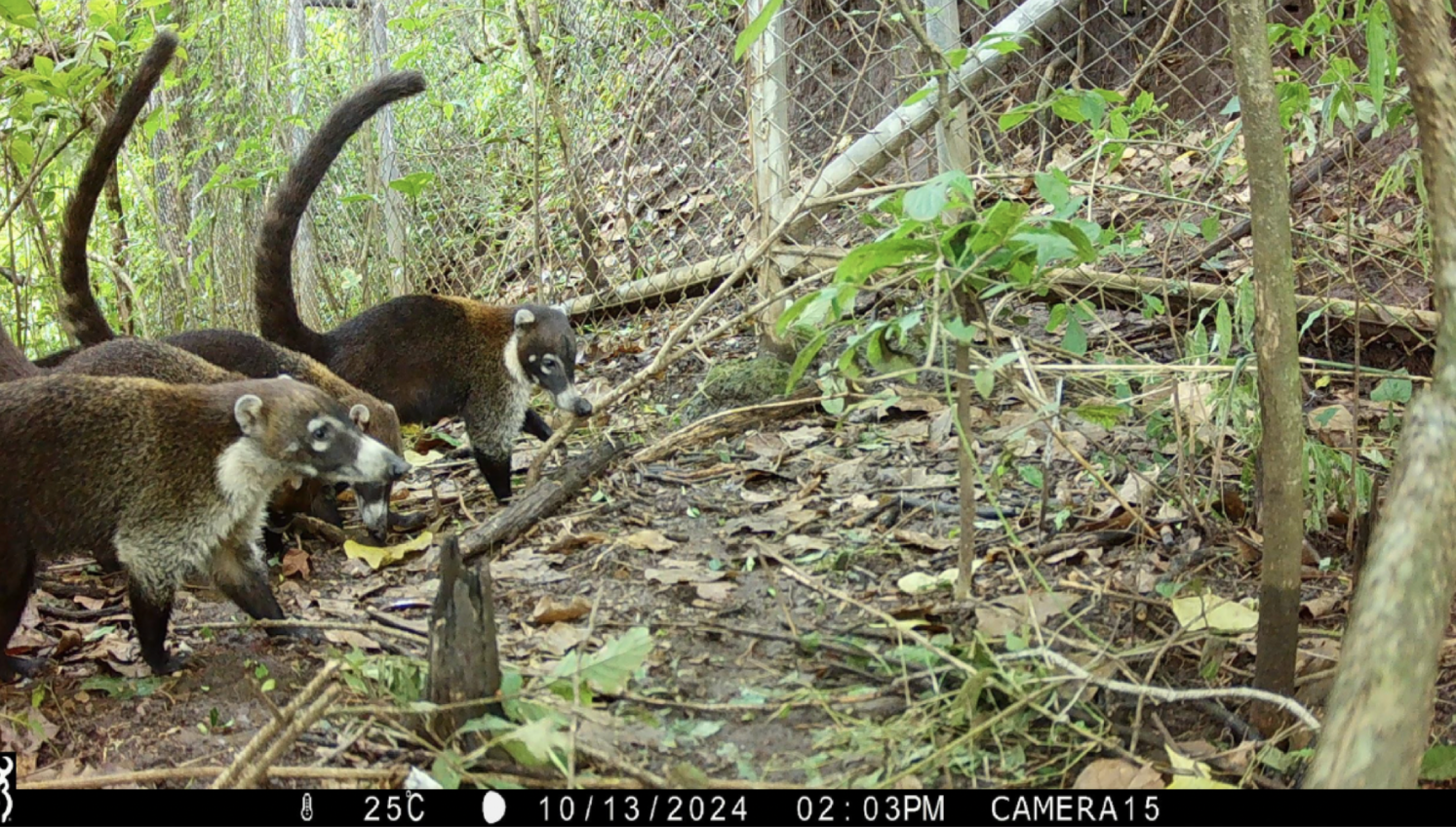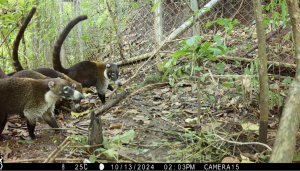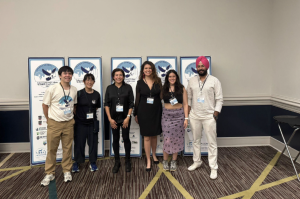Our secret Wild neighbors
By Alexia Pereira-Casal
When you ask, most people will say that they love nature and animals and that they enjoy a walk in the woods, observing birds, and the thrill of a close encounter with a wild creature. However, when those close encounters happen in their own homes, their opinion changes. They insist that wild animals should stay in the wild and have nothing to do in the city—this is where humans live. Needless to say, wild animals are already living in cities. We see rodents in sewers, raccoons eating trash, and coyotes moving around as if it’s their territory—because it is! We are coexisting with urban wildlife, and there is no turning back. Living organisms adapt to changing environments, and the more we convert wild habitats into cities, the more flexible species adapt to the new niche. Those that don’t are displaced to find a new home or risk extinction due to this human-induced change of land. That’s the thing: humans are so excellent at changing the environment that we are impacting the climate and natural processes the Earth has refined over thousands of years. Organisms are great at adapting—and when they can’t, they face the end of their era.
Currently, some of the biggest threats wildlife must face are habitat loss, fragmentation, pesticides, rodenticides, and—in my opinion—domestic animals. When we build new roads and cities, we destroy habitats that have existed for millennia. We change the landscape and give it new uses, such as agriculture or cattle grazing. A vast natural environment becomes fragmented “inland islands,” making it harder for animals and plants to disperse, find food, reproduce, and simply thrive—they are forced into cities. Secondly, when we plant crops designed to produce exponentially and without pause, we pump chemicals into the land to accelerate growth. These products leach into rivers, polluting everything—including our own bodies. To extract maximum yield, we also use poisons to kill pests, indiscriminately exterminating both pests and our wild allies and even degrading soil health. Some studies show coyotes that feed on rodents previously exposed to rodenticides become sick or eventually die from secondary poisoning. Finally, when we let our pets roam unsupervised, we introduce new predators into the environment, hunting native species—birds, shrews, snakes, mice, insects—and dispersing diseases that further threaten wild populations.
Understanding how human-made changes impact wildlife—and how animals adapt—is only possible through monitoring programs. Research on wildlife populations can now be conducted with minimal disturbance. Biologists use trail cameras, GPS collars, bioacoustic recorders, and occasional live-capture studies to track movement, assess health, and identify challenges. As someone who does a lot of trail-camera work, I’m always thrilled to check the photos and videos—especially seeing people’s reactions when they discover their silent neighbors, unbeknownst to them, sharing their backyards with bats, opossums, and wild mice. We can protect what we know, and learning we share our homes and cities with other species helps us change behaviors that harm them—like using pesticides and rodenticides or letting cats and dogs roam free.
In June this year, I attended the International Urban Wildlife Conference in Atlanta, GA, USA. There, I learned from and connected with scientists who study, protect, and advocate for urban wildlife. Three top topics emerged: managing negative interactions with wildlife, how socio-political dynamics impact wildlife and their conservation, and how pesticide and chemical use affects animal health. OTS in Costa Rica is already working with communities and municipalities on proper waste management and coyote-human interaction protocols. Yet, it remains crucial to dive deeper into socio-political dynamics and strengthen chemical-use regulations so that better decisions guarantee a healthy, balanced ecosystem for both people and non-human inhabitants. Next steps include building bridges between organizations—such as a possible collaboration with the Wildlife Working Group—to share experiences and cooperate, just like nature does!
Costa Rica contains 6% of the world’s biodiversity thanks to its position as a bridge between North and South America and to the Pacific and Caribbean influences that create more than 10 life zones. The country has made great strides—banning wildlife hunting in the 1990s, regulating pesticide use, and enshrining in Article 50 of our Constitution the right to a clean, balanced environment. We run on renewable energy most of the year, and over 50% of the land is covered in vegetation. Yet, there is more to do, with the recent amendment to Executive Decree No. 38924-S raising permissible pesticide levels in drinking water due to the industry of export crops—pineapple, banana, and palm trees—policymakers have twisted their arm to industrial interests. Instead of such a harmful rollback, the Executive Branch could enforce stronger chemical regulations and develop sustainable, eco-friendly pest-control and fertilization systems. Every year, dozens of biologists and science professionals graduate. There’s no shortage of expertise to guide our country—and world—toward a healthier equilibrium. We must include scientists wherever public decisions are made. We are now seeing the effects of these old-fashioned productive habits, but wildlife have had to endure these for decades now. A friend’s remark still resonates: the rights of animals are the first to go; how else do we justify destroying habitats and extinguishing species for our comfort, unaware that their decline portends our own?
While all of these threats and factors may seem logical, imagine this: you’re an animal born in a vast forest. Suddenly, without your consent, highways slash through your backyard and concrete islands replace your shelter. It becomes harder to find food sources, and crossing roads becomes a deadly gamble. Humans cultivate crops you can’t eat—unless poisoned on purpose. You have two choices: adapt to the imposed habitat or flee, abandoning your roots and countless ancestors behind. If you resist, they call exterminators and erase every chance of survival. If this happened to people, we’d call it genocide and rise in protest. Yet, when it’s wildlife, most stay indifferent. I hope this helps you remember our interconnectedness—through shared ancestry, the land, the water, the wind, and the sun. We inherit this Earth together. Please, let’s continue doing our best. As a community, now is the time to act. We can change the world for the better, for us and our secret wild neighbors.



